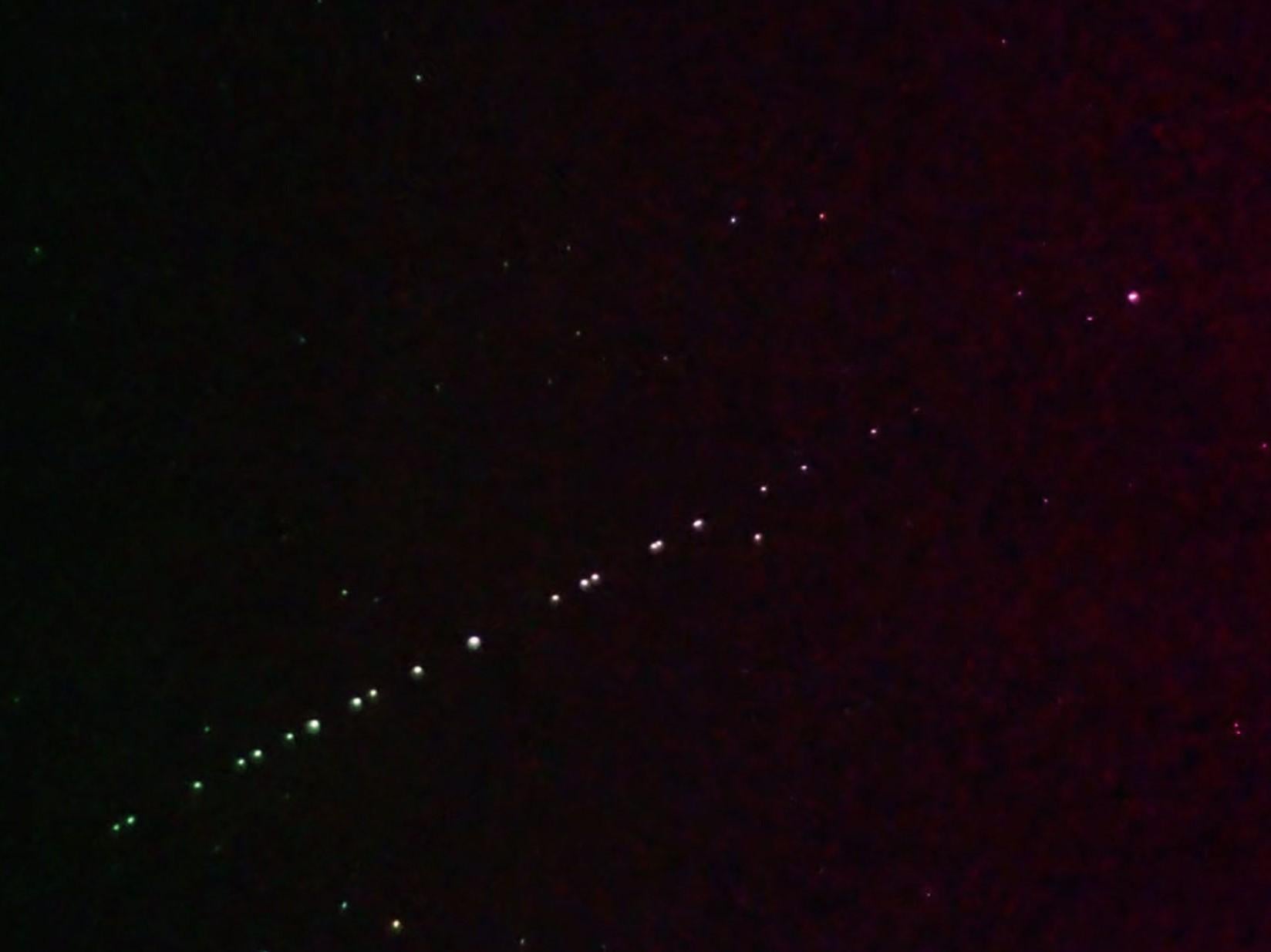SpaceX Starlink launch: Falcon 9 rocket set for lift off on Wednesday night to deploy internet satellites into orbit
Trains of Starlink satellites have been visible in the night's sky following previous launches

Your support helps us to tell the story
From reproductive rights to climate change to Big Tech, The Independent is on the ground when the story is developing. Whether it's investigating the financials of Elon Musk's pro-Trump PAC or producing our latest documentary, 'The A Word', which shines a light on the American women fighting for reproductive rights, we know how important it is to parse out the facts from the messaging.
At such a critical moment in US history, we need reporters on the ground. Your donation allows us to keep sending journalists to speak to both sides of the story.
The Independent is trusted by Americans across the entire political spectrum. And unlike many other quality news outlets, we choose not to lock Americans out of our reporting and analysis with paywalls. We believe quality journalism should be available to everyone, paid for by those who can afford it.
Your support makes all the difference.SpaceX is planning to launch the next batch of its Starlink internet satellites on Wednesday, marking the second major launch for the private space firm in less than a week.
A Falcon 9 rocket will carry 60 Starlink satellites into orbit, with lift-off scheduled for 9.25pm EDT (2.25am Thursday UK time) from the Complex 40 launch pad in Cape Canaveral, Florida.
Adverse weather conditions delayed last week’s launch from the same location of Nasa astronauts to the International Space Station (ISS), which resulted in a delay for the latest Starlink mission.
Weather forecasts from the US Space Force’s 45th Weather Squadron project that there is a 70 per cent probability of favourable conditions for Wednesday night’s launch.
It is the eighth launch of Starlink satellites and if successful it will bring the total number of Starlink satellites to 480. Eventually they will form part of a 12,000-strong constellation designed to beam high-speed internet down to Earth.
SpaceX CEO Elon Musk revealed new details about how Starlink will work last month, stating on Twitter that it will only work for higher latitudes at first.
This will cover places like Seattle and London to begin with, he said, before coverage progressively spreads closer to the equator.
In May, SpaceX signed a three-year deal with the US Army to test Starlink’s broadband internet service when connected to military systems.
A report in SpaceNews claimed that the Cooperative Research and Development Agreement (Crada) will evaluate potential applications and assess whether the Army invests further in the network.
The swarms of satellite have drawn criticism from some astronomers, who claim that they disrupt optical and radio telescopes. Some even claim that the Starlink satellites could potentially even block sightings of Earth-bound asteroids.

Trains of Starlink satellites have been visible following previous launches and continue to be visible at certain times.
Following the last launch of Starlink satellites, Mr Musk said SpaceX was “taking some key steps to reduce satellite brightness”.
These measures include paining the underside of the satellites black and changing the angle of the solar panel at certain times.
Join our commenting forum
Join thought-provoking conversations, follow other Independent readers and see their replies
Comments